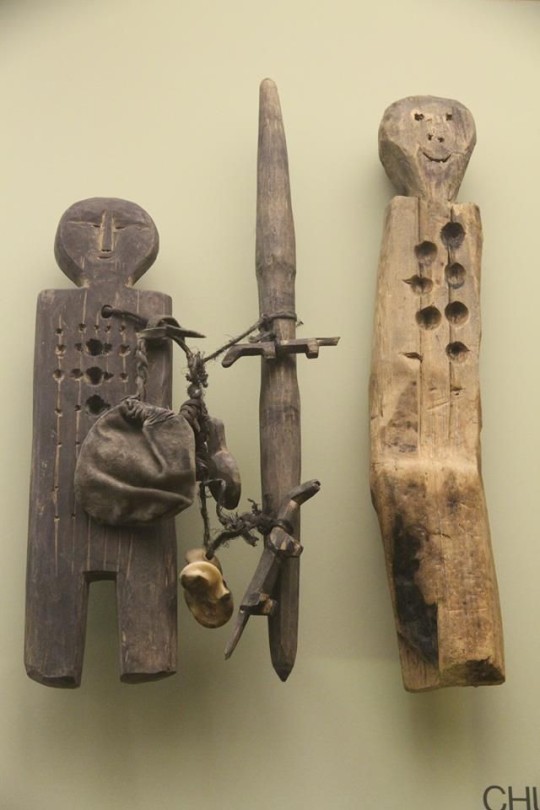#siberian shamanism
Text

SUCCUBUS SPIRIT WIVES OF THE YAKUT SHAMAN;
Like many of the indigenous peoples of Siberia, the Yakuts practiced shamanism, who originally lived around the Olkhon and the region of Lake Baikal.
34 notes
·
View notes
Text
Interacting With Souls and Ghosts in Shamanism: Shaman as Psychopomp
The duties of a shaman involve existence in the borderline states. They also imply crossing the boundaries of the worlds and interacting with the inhabitants of various layers of the universe: shaman both welcomes a new soul that has come into the human world, and accompanies the deceased to the Kingdom of the Dead.

View On WordPress
#anthropology#Buryat shamanism#ethnography#Mongolian shamanism#ongon#shaman drum#shamanic beliefs#shamanic journey#shamanic practices#shamanic rituals#shamanic visions#Siberian shamanism#spiritual practice#shamanism#shaman#shamanic practice#shamanic healing#folklore#folklore studies#nature worship#spiritualguidance#spiritual journey#spiritual practices#mysticism
4 notes
·
View notes
Text
Mummified Shaman Discovered in Siberia

An almost perfectly preserved shaman burial site dating back to the 18th century has been discovered in remote Siberia. In only the second-ever archaeological study in the Yakutia area of Siberia, Russian researchers at the Institute for Humanitarian Research and North Indigenous Peoples Problems discovered the mummified remains of a fully-clothed man inside a sarcophagus.
Shamans are spiritual leaders among the Yakut, practicing as healers and diviners in their communities. Yakutia, the Yakut homeland, is hugely remote, situated in the far northeast of what is now Russia. When Russia occupied Yakutia in the 17th century, Orthodox Christianity began to influence the folk religion. However, during Soviet rule, shamans and their followers were persecuted. The religion didn't die out, though, and continued to be practiced in secret.
The burial lay at a depth of around 2.5 feet, and the sarcophagus was made of wide planks and covered with birch bark. The mummified body of a man was wearing a suit consisting of a caftan, a silk shirt, cuffs and legs. The shaman's legs were of particular interest, as they were covered with fabric that was embroidered with colored threads and a patchwork of leathers from hips to ankles. The shaman also wore a pair of leggings, a caftan, a belt, and was accompanied by a saddle, girth straps with iron buckles, stirrups, two bags and a funeral feast.
The shaman and its burial site are in remarkably good condition considering it has been buried for over 200 years. This is a truly unique find, because due to climate change, the preservation of items from archaeological excavations is getting worse every year, and the search for funerary monuments is gradually becoming more difficult due to dynamic changes in the landscape.
4 notes
·
View notes
Text

A Tatar shaman, Minusinsk, Siberia, c. 1910.
#Tartar#Shaman#Slavic#Slavic shaman#Slavic mysticism#Minusinsk#Siberia#Minusinsk Siberia#Siberian Shaman
46 notes
·
View notes
Text
The famous Siberian Ice Maiden was found in the Altai region of Russia in 1993. She had amazing tattoos, and we finally know just why she died so young.
#Siberian Ice Maiden#Altai#russia#burial chambers#Pazyryk#Ukok plateau#horses#elite burial#death journey#coffin#deer tattoos#cannabis#female shaman#priestess#headdress#MRI scan#breast cancer#Altai clan#ancient#history#ancient origins
110 notes
·
View notes
Photo

A shaman watches TV inside the Tos Deer ( nine skies) association in the Siberian town of Kyzyl, Republic of Tuva, Russia. Photographed by A. Abbas.
#photojournalism#siberia#photojornalist#shamanism#asia#tuva#russia#tuvans#a. abbas#northern asia#abbas
2K notes
·
View notes
Text
Why do I always get interested in topics that i can't find decent books on
#some time ago i wanted to know more about siberian shamanism#but i could only find some new age shit#lately i've been curious about npd for writing reasons#but i can only seem to find stuff that demonizes people with that disorder#personal
0 notes
Text
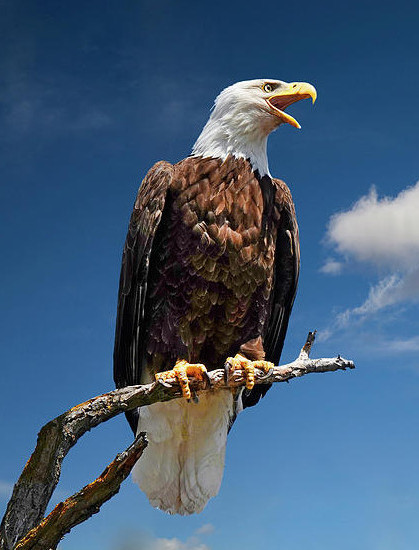
Legends and myths about trees
World tree - the source of wisdom of the ages
The world tree is a motif present in several religions and myths around the world. It is represented as a colossal tree which supports the heavens, thereby connecting the heavens, the terrestrial world, and, through its roots, the underworld.
Many Eurasian mythologies share the motif of the "world tree", "cosmic tree", or "Eagle and Serpent Tree". More specifically, it shows up in "Haitian, Finnish, Lithuanian, Hungarian, Indian, Chinese, Japanese, Norse, Siberian and northern Asian Shamanic folklore".
The World Tree is often identified with the Tree of Life, and also fulfills the role of an axis mundi, that is, a centre or axis of the world. It is also located at the center of the world and represents order and harmony of the cosmos. Each part of the tree corresponds to one of the three spheres of the world (treetops - heavens; trunk - middle world or earth; roots - underworld) and is also associated with a classical element (top part - fire; middle part - earth, soil, ground; bottom part - water).
Its branches are said to reach the skies and its roots to connect the human or earthly world with an underworld or subterranean realm. Because of this, the tree was worshipped as a mediator between Heavens and Earth. On the treetops are located the luminaries (stars) and heavenly bodies, along with an eagle's nest; several species of birds perch among its branches; humans and animals of every kind live under its branches, and near the root is the dwelling place of snakes and every sort of reptiles.
A bird perches atop its foliage, "often .... a winged mythical creature" that represents a heavenly realm. The eagle seems to be the most frequent bird, fulfilling the role of a creator or weather deity. Its antipode is a snake or serpentine creature that crawls between the tree roots, being a "symbol of the underworld".
The imagery of the World Tree is sometimes associated with conferring immortality, either by a fruit that grows on it or by a springsource located nearby. In some descriptions this "water of life" may also flow from the roots of the tree.
The world tree was an important element in shamanistic worldview as well, and it is said that the giant bird ... hatches shamans in the branches of the World Tree.
Some species of birds (eagle, raven, crane, loon, and lark) are revered as mediators between worlds and also connected to the imagery of the world tree. Another line of scholarship points to a "recurring theme" of the owl as the mediator to the upper realm, and its counterpart, the snake, as the mediator to the lower regions of the cosmos.
Northern Eurasian and Central Asian traditions wherein the World Tree is also associated with the horse and with deer antlers which might resemble tree branches.
Some scholars have pointed out that, from the perspective of evolutionary biology, the concept of a world tree may have originated in human thought. This is because our ancestors lived in trees for about 60 million years, and for them the trees were everything in the world. This is why the collective unconscious that the world is made of giant trees has remained with us to the present day.

木にまつわる伝説・神話
世界樹 〜 時代の叡智の源
世界樹は、世界中の宗教や神話に見られる概念、モチーフである。天を支える巨大な木として表現され、それによって天と地上世界、そしてその根を通して冥界をつないでいる。
多くのユーラシア神話が「世界樹」「宇宙樹」「鷲と蛇の樹」というモチーフを共有しているとされている。具体的には、「ハイチ、フィンランド、リトアニア、ハンガリー、インド、中国、日本、北欧、シベリア、北アジアのシャーマン伝承」に見られる。
世界樹はしばしば生命の樹と同一視され、また、世界軸、つまり世界の中心や軸の役割を果たす。また、世界の中心に位置し、宇宙の秩序と調和を表している。樹木の各部分は世界の3つの圏(梢-天、幹-中世界または地、根-地下世界)のいずれかに対応し、古典的な元素(上部-火、中部-地、土、地面、下部-水)にも関連している。
その枝は天空に届き、根は人間界や地上界と地下世界や地底界をつなぐと言われている。そのため、この木は天と地を結ぶ媒介として崇拝された。梢には星や天体があり、鷲の巣がある。枝には数種類の鳥がとまり、枝の下には人間やあらゆる動物が住み、根の近くには蛇やあらゆる爬虫類が住んでいる。
その葉の上にとまる鳥は、「しばしば......翼を持つ神話上の生き物」であり、天界を表す。鷲は最も頻繁に見られる鳥で、創造主や天候の神の役割を果たしているようだ。その対極にあるのは、木の根の間を這う蛇や蛇のような生き物で、「冥界の象徴」である。
世界樹のイメージは、そこに生る果実や近くにある泉によって不老不死をもたらすことと関連付けられることもある。この「生命の水」は木の根からも湧き出るという記述もある。
世界樹はシャーマニズムの世界観においても重要な要素であり、「巨大な鳥は......世界樹の枝でシャーマンを孵化させる」ともいわれている。
いくつかの種の鳥(ワシ、ワタリガラス、ツル、ハシビロコウ、ヒバリ)は、世界をつなぐ媒介者として崇められ、世界樹のイメージとも結びついている。また、別の研究では、フクロウは天上界への媒介者であり、それと対をなすヘビは宇宙の下界への媒介者であるという「繰り返されるテーマ」が指摘されている。北ユーラシアや中央アジアの伝統では、世界樹は馬や、木の枝に似た鹿の角とも関連づけられている。
一部の学者は、進化生物学の観点から、世界樹という概念が人類の思考の中に元から備わっている可能性を指摘している。というのも、人類の祖先は約6000万年にわたり樹上で生活しており、その時代の彼らにとっては木々こそが世界のすべてであったと考えられるからである。そのため、この世界は巨大な木で出来ているのだという集合的無意識が、現在の我々に至るまで残っているのだというものである。
#trees#tree legend#tree myths#legend#mythology#folklore#world tree#bird#tree of life#water of life#sharamanism#nature#art#source of wisdom
143 notes
·
View notes
Note
Speaking of shamans, CT, what's your opinion on the argument that using the word "shaman" and its derivatives is cultural appropriation from the indigenous peoples of Siberia? Is there a synonym/euphemism that covers the various practices catergorized as "shamanism"?
Useful term for humorously describing the type of guy that works at a CBD store and talks about "Psychic Ordeals" a lot but was otherwise a nice dude before he got into Qanon.
Effectively useless in an academic sense unless you are referring to the specific siberian religious figures.
256 notes
·
View notes
Text
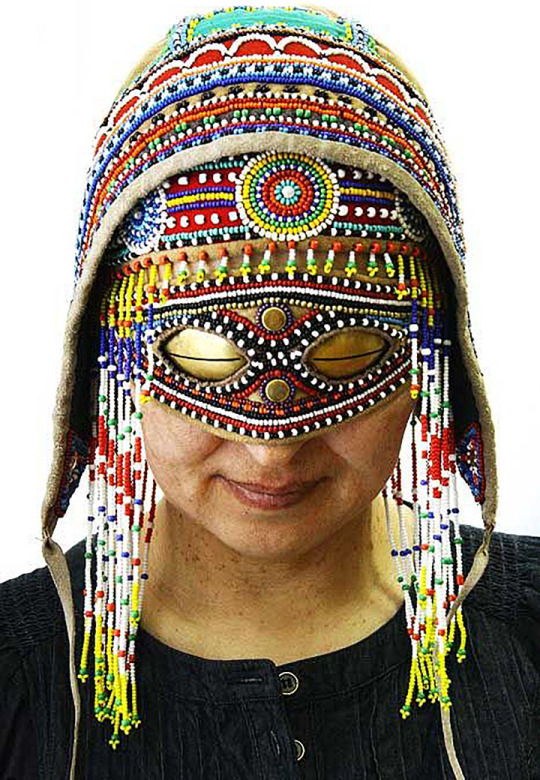



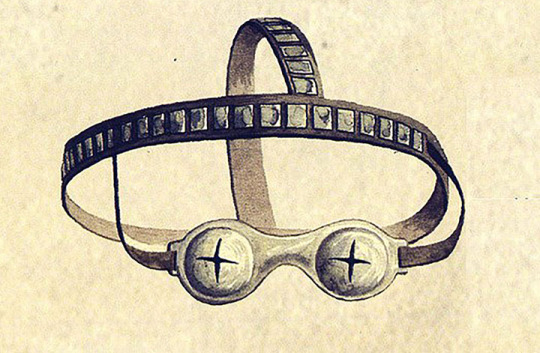
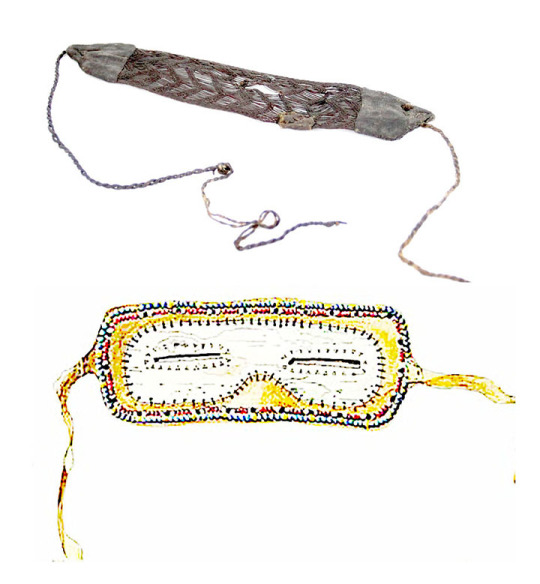


Siberian snow goggles from the Khanty, Nganasan, & Sakha
Toying with an idea here. The concept of the one-eyed Arimaspians has me curious if this was a nickname for people from the north who lived in places where snow goggles may have given the appearance of having a single eye. Given a far enough physical distance and passing through the gossip of enough different languages, by the time this info made it to the Greeks what began as a nickname may have sounded like these people were literal cyclopes. Just a thought. I assume people back then used eye protection from the snow, in some manner, just like people do today. Some of the snow goggles (both modern and historical) do give the appearance of a single giant eye, while others have two eye spots. I wasn't able to find much on this as far as historical info goes, and unfortunately I couldn't find images of the ancient grave finds the article talked about. The oldest of the discovered snow goggles being 2,000 years old from northeast Asia. I'm not sure if the initial black and white sketch is of the ancient goggles or not, the post didn't explicitly say. Below is whatever info I could find on historical snow glasses in Eurasia:
"In ancient times, like today, these goggles were made by skilled masters to combine effectiveness in blotting out the blinding light in some cases looking amazing.
Different ethnic groups across polar regions evolved their own distinctive style in snow goggles.
The most ancient known eyewear belong to the Old Bering Sea culture, the sites of which are located on the both sides of Bering Strait.
The oldest date for the culture - around 400 years BC - was obtained on Russian side, at Ekven graveyard, in Chukotka.
The peak of the culture is considered to be in second and third centuries AD.
At Ekven and also Uelen graveyards snow goggles made of bone were found, dating from the first to the fifth centuries AD.
Some were decorated with carvings, some not, and examples are shown here in these drawings.
Later the snow goggle tradition by Eskimos, for example the Inuits and Yupik, and the Chukchi people.
While there was an obvious practical use for the goggles, a variant of these ‘spectacles’ xxxx is believed to have been used by traditional shamans; for example a pair of goggles without holes of slips was found at Ekve
The Event and Dolgans people turned to metal in making the eyewear with copper or tin or silver goggles inserted into a half-mask made of reindeer skin or other pelt, or, later, cloth obtained from Russian incomers. Decorations with beads was also a feature.
The same type of goggles was also used by other Arctic people such as the Nganasan or Khanty. The British Museum even has some examples.
The tradition continues to this day and is thriving in Yakutia - also known as Sakha Republic, the largest region in the Russian Federation.
Going back in time, the Yakut people used a wide range of materials to make goggles - metal, birch bark, wood, bone, skin, and horsehair.
The goggles created from horsehair comprised strips of intricate net. A surviving 19th century example comes not from Yakutia but Tuva, the mountainous region in southern Siberia, now in a collection in the Irkutsk Museum of Local History.
Most of the metal goggles in Yakut collections are dated from between the 18th and early 20th centuries.
Again, some definitely had ritualistic uses: they were deployed by shamans, and not in everyday day life for use in snow.
Many Yakuts recall that their grandfathers had very simple goggles made of birch bark.
Local historian Prokopy Nagovitsyn said: 'The round shaped silver goggles began to make an appearance in 19th century, when there appeared many rich people.
‘The shape had a symbolic meaning - cross in the circle had been the symbol of the sun since neolithic times.
‘Yet the cross-shaped cuts are convenient not when you are in tundra, but when you, for example, climb steps.’
Most of the older goggles look rather simple - for example a metal strip with the small deepening for the nose and slots for sight. Others have two round metal discs with a slit to see through while blotting out most of the glare; these were fixed into a the mask of skin or fur."
-taken from SiberianTimes
#snow goggles#sunglasses#khanty#nganasan#sakha republic#antiquities#history#yakutia#siberia#arimaspian#british museum
1K notes
·
View notes
Photo

Siberian Shaman with a collection of shamanic objects, circa 1900s.
219 notes
·
View notes
Text
My bone to pick with shitty hetalia "Siberia" OCs
Spoiler alert, they're all terrible!
Many people who make Siberia ocs often refer to Siberia as a nation. Siberia is not a nation, it is a large geographical area which is the home to many different ethnic groups.
This excuse is often made for singular "native American" ocs too; Using the excuse that because of the Russian conquest of Siberia which resulted in the massacre and displacement of the different peoples of Siberia, this is a justification to put all of these different groups into one, singular, Siberia OC, as apparently, there's no point in doing actual research into the different ethnic groups who are native to Siberia!
This I find to be blatantly disrespectful, conflating such diverse groups into one (often whitewashed as I'll get onto later) singular OC and flippantly saying "oh well a lot of them are dead now so..." is again, disrespectful and insensitive. A Tuvan is not an Evenk is not a Yakut is not a Buryat is not a Chukchi is not a Koryak.
That list I just gave you is just a small example of the sheer diversity of the ethnic groups who are native to Siberia.
It leaves a very bad taste in my mouth when people use the Russian conquest of Siberia - an already sensitive topic because of the displacements and killings of the native people of Siberia which in turn, resulted in an ethnic cleansing, as a vehicle to then create (as I said before, often whitewashed) OCs which dismiss the unique cultures and histories of these different groups. Do people...Not see the irony in this?
Honestly, just 5 minutes of research into the native groups of Siberia would show you that trying to conflate all of these different cultures into one just does not make sense regardless. Though these cultures share similarities because of course they are North East Asian - this is not a justification to waive off the diversity of these ethnic groups!
Let's take Buryats and Yakuts for example, two ethnic groups who live in Siberia and who are considered to be Siberians. Buryats are a Mongolic people, their culture is quite similar to that of Khalkha Mongols, the majority ethnic group in Mongolia. Yakuts on the other hand, are not a Mongolic group.
The Buryats live primarily in the Republic of Buryatia, located in southern Siberia, Russia, while the Yakuts, also known as the Sakha, inhabit the Sakha Republic (Yakutia) in the Russian Far East. Both groups have historically practised nomadic herding, but the Buryats traditionally focused on cattle herding and moved with their herds across the vast steppe, while the Yakuts were known for their reindeer herding and horse breeding in the Arctic and subarctic regions. The Buryats' culture has been heavily influenced by Tibetan Buddhism due to historical connections with Tibet, and shamanism also plays a significant role in their spiritual practices. The Yakuts' culture, in contrast, reflects influences from both Turkic and Siberian indigenous elements, with some Russian cultural assimilation over time.
Geographically speaking, they also differ. Buryatia is characterised by diverse landscapes, including mountains and lakes, while Yakutia is known for its extreme cold temperatures and vast tundra. Despite their differences, both groups have rich cultural heritages and face challenges in preserving their traditions and languages amidst Russian colonisation.
Just between Buryats and Yakuts, you can already see how they differ culturally and linguistically. Of course there will be some similarities as they are both Northern Asian cultures, but we don't give Spain and Portugal a singular personification because of similar characteristics/cultures now, do we?
Another issue I have with Siberia OCs is when, not only (by default) is a Siberia OC blatantly dismissive of the diversity of the ethnic groups who are native to Siberia, but when they make their already insensitive OC... White Russian, or half Russian? Do I even need to explain why this is offensive?
Yes, a majority of people who live in Siberia now are ethnic Russias. Do you ever... wonder why that is though?
What's worse is when people know, but then use the displacement of the people of Siberia as a justification to make their Siberia OC half Russian or white. This is blatant white washing, and though many groups are Russified, this does not mean that they've completely let go of their native culture and or are extinct, nor is it an excuse to ignore their native cultures to make an insensitive oc.
There is a difference in recognising that yes, some of these groups have gone through a process of Russification/have adopted many aspects Russian culture (to varying degrees depending on the group) , and straight up white washing their cultures by making a half white-Russian or a white Siberia OC - as if each of their unique identities do not deserve the agency to be represented by an equally unique and accurate personification.
Groups in Siberia never had strong relations with ethnic Russians until the Russian conquest of Siberia. It's okay to have an oc of a Siberian ethnic group which reflects the degree of Russification that that group underwent because (unfortunately) it's true for many of them - Kazakhstan for example is a central Asian country that underwent a process of Russification and it's accurate to reflect the degree to which Kazakhstan was Russified and how this affected him in his personification. Despite it being an unfortunate fact, you can't escape it, and I am not against reflecting this.
But it's a whole different ball game when you take already marginalised groups of people, squeeze their diverse cultures into a clusterfuck of an oc, which is already bad in and of itself… but then WHITEWASH THIS OC. EVEN WORSE WHEN THEIR CULTURES WERE ACTIVELY PERSECUTED BY THE RUSSIAN STATE, AND ARE STILL BEING PERSECUTED.
Further, the idea of making the Siberia OC "young" (even an oc of a singular Siberian ethnic group) as in, born during the Russian conquest era… and make Russia some sort of father to Siberia… This just absolutely reeks of paternalistic colonialist propaganda; the idea that these groups had no culture, no right to govern themselves or the idea that they didn't have the ability to govern themselves before the Russians came and subsequently "gave them culture" and "enlightened them" in their ways.
What other actual justification is there to do something like this? Seriously? When these cultures are actually quite old and predate the Russian conquest?
As a Filipino who has to deal with this sort of trash from Spaniards, it is not appreciated.
Further, if it wouldn't make sense to make a native American group OC half white because of white settlers in America, and if it wouldn't make sense to make the Philippines half Spanish because of our colonisation under the Spanish, why then is it ok to do it to the native people of Siberia?
This is the WORST part about Siberia ocs. But people who make their Siberia ocs the representation of 2p (or BOO! EVIL!) Russia.
This is so egregiously racist and I don't even know how people can headcanon this without even batting an eye.
First of all, making Siberia the "evil Asian" side of Russia… okay I've bloody banged on about this before but I really don't care at this point. This is stepping into peddling eugenicist racial science about Russian.
The rhetoric that Russians (but this also applies to other eastern Europeans, however I'm specifically talking about Russia here seeing as it's about Siberia ocs) are not "true Europeans" because of Asiatic influence, both from the past (Mongol invasions) and present (Russian Asians who are the result of the Russian conquest of Siberia and central Asia). And because of this, this means that Russians are also a load of evil, Eastern Hordes too because of their so called "Asiatic" heritage.
There's a saying in some Eastern European countries about Russians. It goes something along the lines of "Scratch a Russian, you'll find a Tatar." This is used in an offensive manner to basically call Russians subhuman or evil because of their so-called "tatar" (Asian) heritage.
Keeping this in mind… Making Siberia… the "evil Asian side" of Russia… yeah I'm not beating around the bush with this one. You're a filthy racist if you do this.
It's even more egregious when you're using Siberians as a justification to make your cheap 2p Russia OC evil, as if SIBERIANS are the aggressors towards Russians. WHEN THEY WERE THE ONES WHO ARE COLONISED BY RUSSIA AND TO THIS DAY FACE MARGINALISATION UNDER THE RUSSIAN STATE. BUT NO. THEY'RE THE BIG EVIL AGGRESSORS TOWARDS YOUR INNOCENT WHITE BLORBO, RIGHT?
tl;dr If you have a singular "Siberia" oc it's trash no matter what, hope this helps 👍
#hetalia#hetalia world stars#hetalia world series#hetalia world twinkle#hetalia discourse#Hetalia racism#Hetalia Russia#Aph Russia#Hws Russia#ivan braginsky#Aph Siberia#Hws Siberia#Hetalia Siberia#Siberia oc#2p Russia#2p!Russia#2p hetalia#2p!hetalia#Not aimed at any of my followers btw ik there are some people who used to have Siberia ocs but realised it was offensive#Dw it's aimed at people who continue to do this despite knowing otherwise
73 notes
·
View notes
Photo


Siberian shaman Otshir Böö, photo by Sakari Pälsi (1909)
275 notes
·
View notes
Text
bc i love unhinged love shit, some of my favorite Xena episodes are Adventures in the Sin Trade Part 1 and 2 because Xena goes absolutely fucking insane with grief over Gabrielle's death and returns to a place she passed through as a young warrior where she encountered deep types of magic perpetuated by a very wicked shaman. but, she's desperate to find where Gabrielle's soul is to bring her back to the land of the living. the feel of the episodes is so dark and wet and gritty and miserable.

this is also when we got to see Siberian steppes past Xena and the costuming is bomb



31 notes
·
View notes
Photo
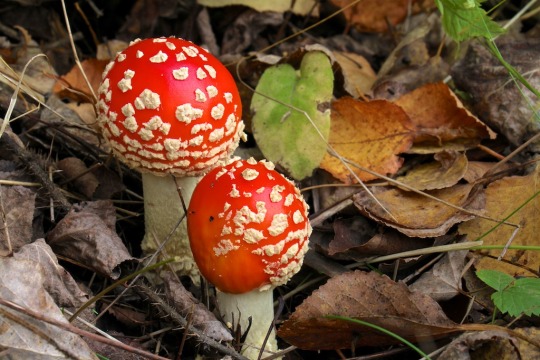
“In Siberian legends, the reindeer took flight each winter after ingesting the hallucinogenic Amanita Muscaria mushroom, the archetypal red toadstool with white spots. Shamans would join them on a vision quest, by taking the mushrooms themselves. Climbing the tree of life in her horns, they would take flight like a bird into the upper realms. Other folktales tell how shamans, dressed in red suits with white spots, would collect the mushrooms and then deliver them through chimneys as gifts on the winter solstice. While many historical explorations of the pagan origins of Christmas observe the link between Santa’s garb and the red and white amanita mushroom ingesting shaman, few mention that is was the female shamans who originally wore red and white costumes trimmed with fur, horned headdresses or felt red hats! The ceremonial clothing worn by medicine women healers of Siberia and Lapland, was green and white with a red peaked hat, curled toed boots, reindeer mittens, fur lining and trim. Sound familiar? So this season, when we gather by the fire to tell children bedtime stories of Santa and his flying reindeer – why not tell the story of the ancient Deer Mother of old? It was she who once flew through winter’s longest darkest night with the life-giving light of the sun in her horns.”
https://jocelynmercado.com/blog/deer-mother-winter-solstice
#by J Marion Brown#amanita muscaria#mushroom#winter solstice#photographers on tumblr#naturephotography
183 notes
·
View notes
